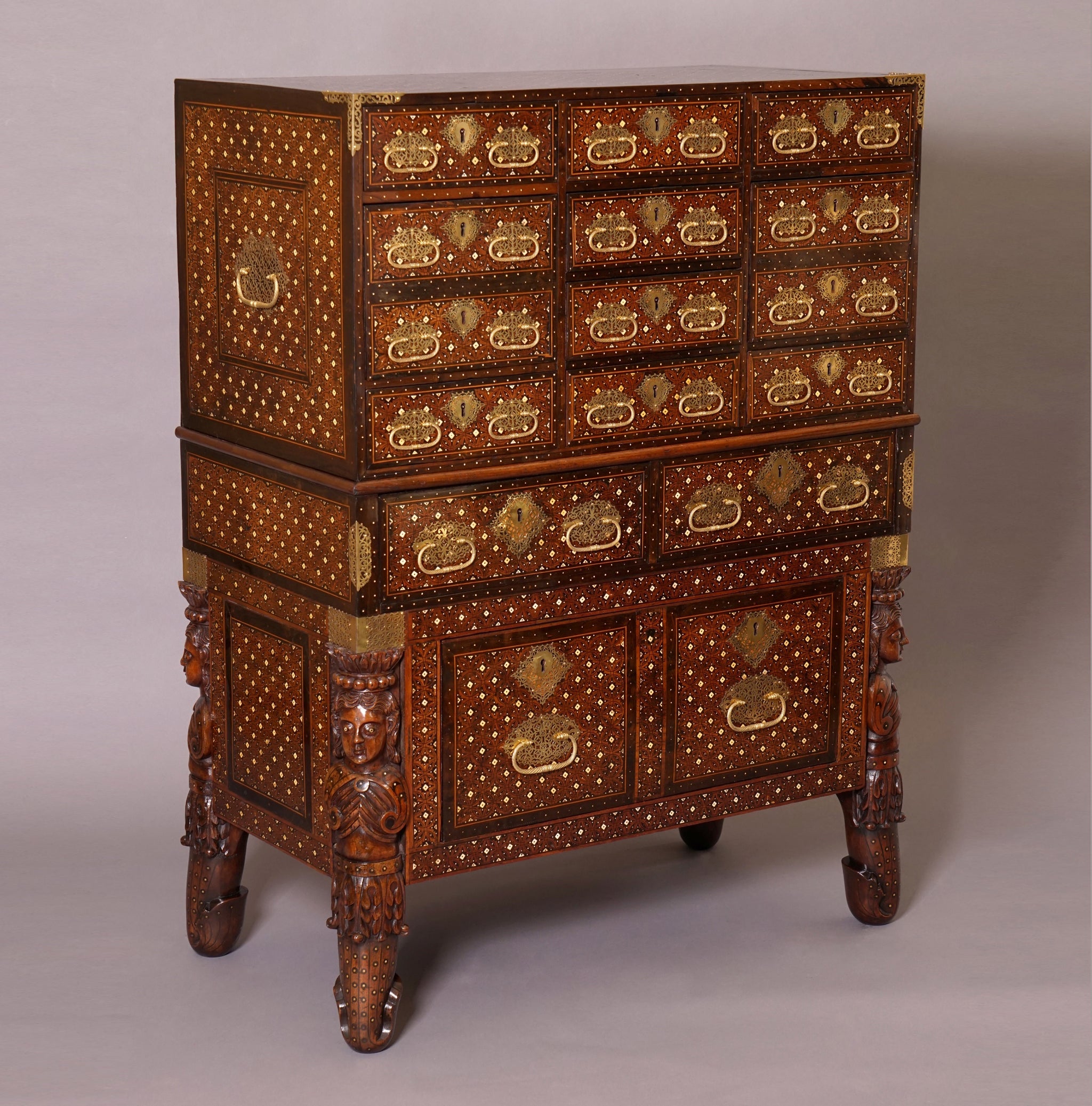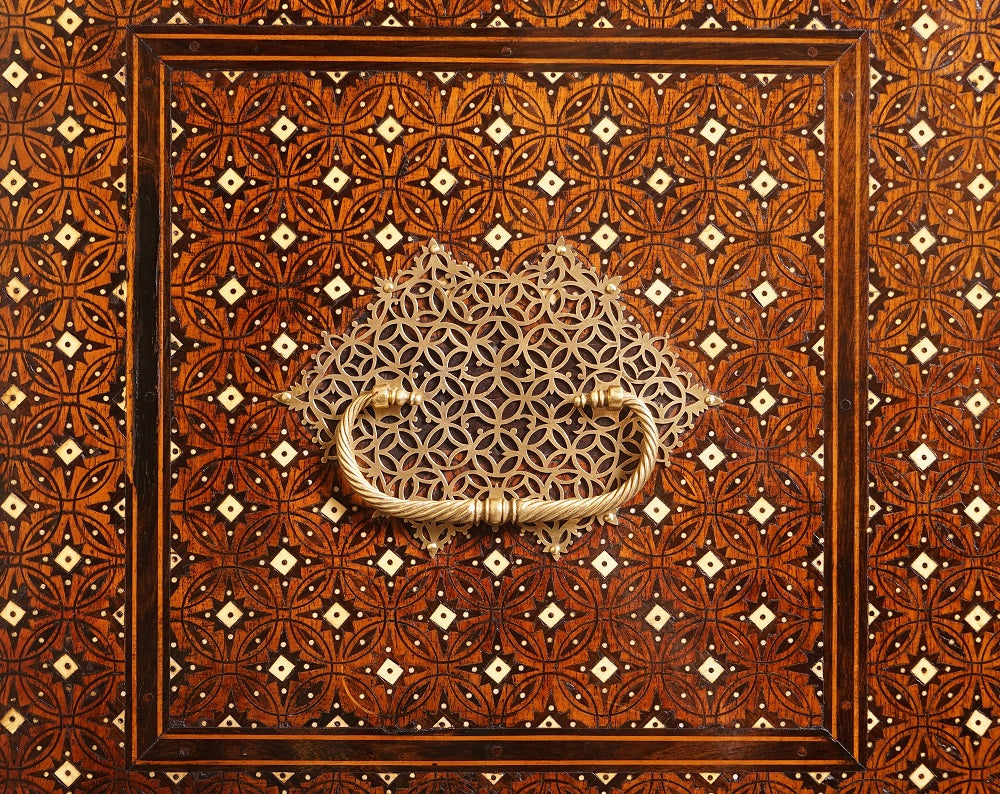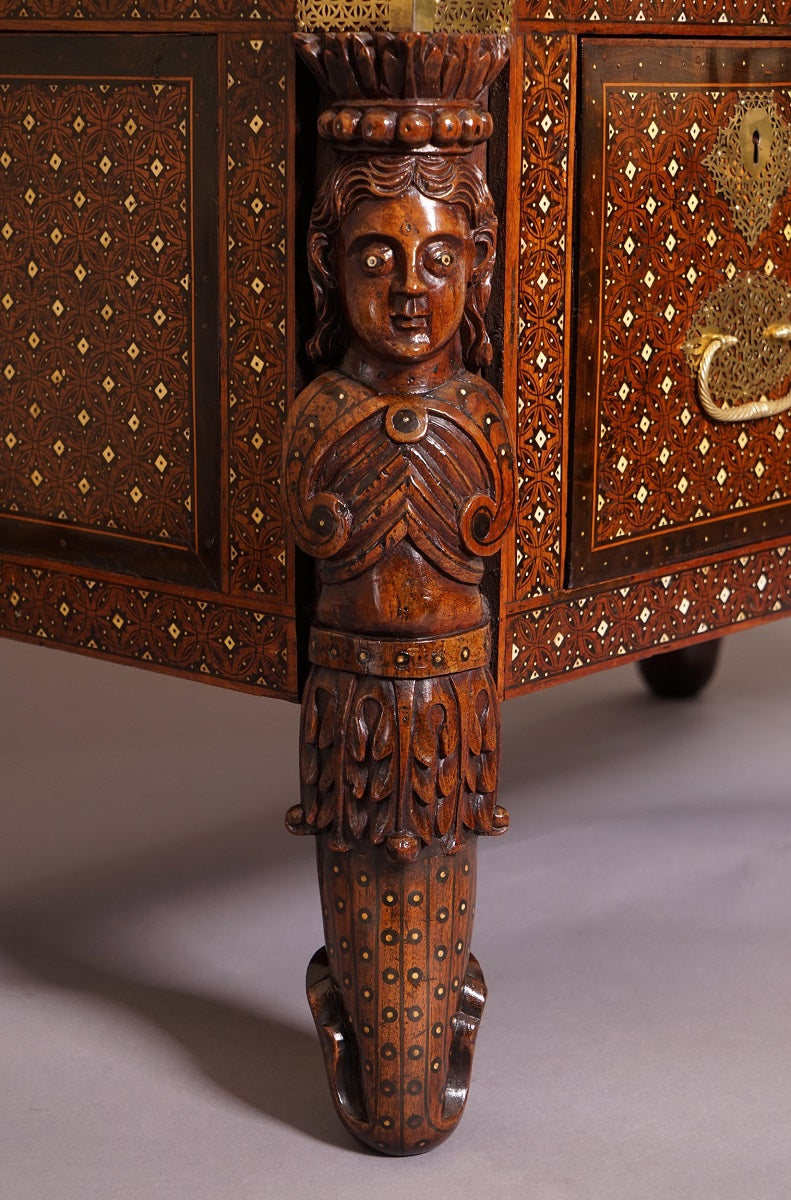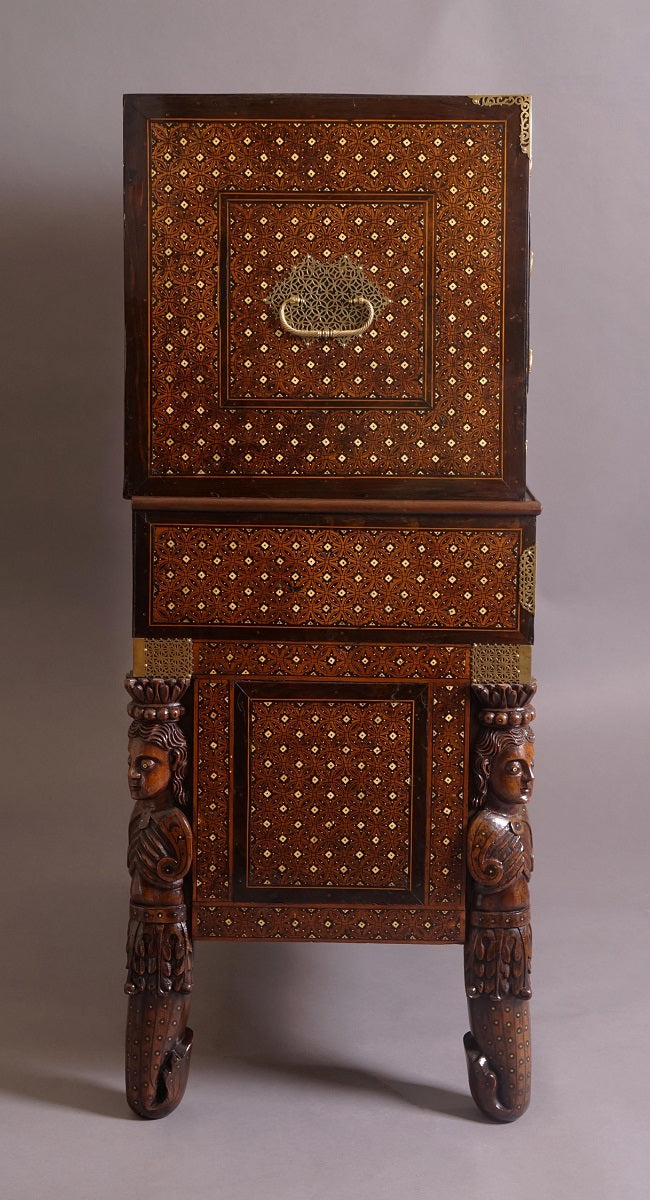A 17th Century Indo-Portuguese Cabinet On Stand
SOLD
The cabinet in rosewood, teak and ebony is inlaid with ebony and ivory stars and interlocking circles to the front, top and sides. Comprising an upper section with ten drawers in three registers, and a stand incorporating two drawers above a large drawer. The whole supported on sculptural legs carved in the form of naginis; the tails replaced. With extensive gilt copper handles and mounts throughout; the handles and mounts replicated with the exception of the large side handles.
When Europeans first arrived in Asia the absence of chairs and chair-height furniture such as tables meant that they found much native furniture unsuitable for use. Instead, they commissioned their own pieces from local craftsmen, leading to the development of unique Eurasian styles. The present cabinet is an exceptional example of this fashion, combining the European form of a cabinet-on-stand with Indian craftsmanship of the highest calibre. The resulting effect is of exotic opulence, combining both Western and Eastern traditions. For example, the sculptural legs take the form of naginis – auspicious Hindu snake deities, represented with the upper body of a human and the scaled tail of a sea serpent. The guardians of rivers, lakes and fountains, these gods were believed to be auspicious, and even to provide protection against snakebites. Despite the Asian subject, the idea of adding these types of figures to furniture was distinctly European. It relates to the late seventeenth century convention of utilizing architectural forms for decorative furniture, and in particular to the use of atlantes (the male equivalents of caryatids) as supports for cabinets-on-stands.
This cabinet was almost certainly manufactured in Goa, the centre of Portuguese economic and religious life in Asia. As early as 1596, Jan Huygen van Linschoten, a Dutch sailor who lived in Goa, described the great many craftsmen working in the city under the patronage of the Portuguese. He notes that each industry was concentrated in a different street of the city, and seems impressed by the diversity of the ‘Heathen’ craftsmen: ‘There is also a street full of gold and Silver Smithes… which make all kinde of works, also divers other handicrafts men, as Coppersmithes, Carpenters, and such like, which are all heathens, and everyone a street by themselves.’ (Linschoten, Itinerary, London, 1598, vol. I, p. 229)
Closely related cabinets can be found in the Victoria & Albert Museum, London; the Indo-Portuguese Museum in Fort Kochi, Kerala and the Museu Nacional de Arte Antiga, Lisbon.
Height: 48.5” (123.5 cm)
Width: 37” (94 cm)
Depth: 19” (48.5cm)
Literature:
Amin Jaffer, Luxury Goods From India: the art of the Indian Cabinet-Maker, London, V&A, 2002, pp. 58-59.
Maria Helena Mendes Pinto, Indo-Portuguese Museum : Bishop's House, Cochin, Lisbon, Fundação Calouste Gulbenkian, 2008.
Collections: Archive
Share:





